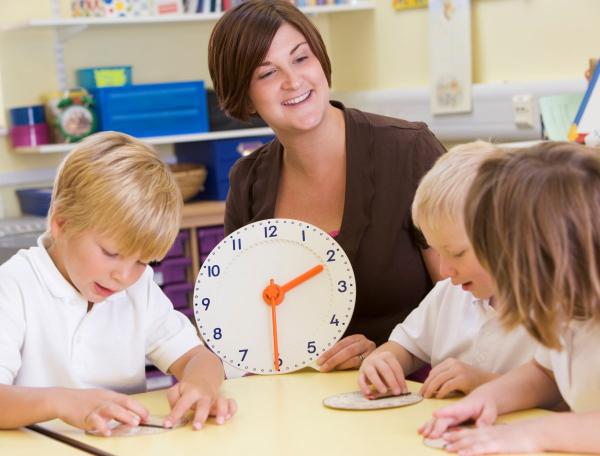The time lord

Developed in partnership with Education Services Australia
The Australian Curriculum sets the goal for what all students should learn as they progress through their school life. Skills in the Year 1-2 curriculum include:
- knowing the order of days in a week and months in a year
- telling time to the quarter hour and using the terms a quarter to, a quarter past and half past
- recognising that months don't all have an equal number of days
- understanding that seasons are one way to organise months of the year.
It’s easy to help your child practise these skills as part of everyday life – just use these simple ideas.
Be time conscious
There’s a lot to learn when it comes to telling the time, including tricky things such as the number of days in February. Give your child lots of practice with by making times and dates a regular part of your conversations. For example:
- ask your child the time, tell them what time things are happening, and vary the way you tell the time so that your child gets used to the different formats
We'll have lunch at half past twelve / twelve-thirty.
The movie starts at five-forty / twenty to six. - keep a family calendar where your child can see it, and find chances to ask your child to refer to it
What day is the 10th of September?
What's the date next Sunday?
Could you write your sleepover on the calendar?
How many weeks are there until nana’s birthday? - ask your child to read dates in letters, books etc, exposing them to different formats and to different centuries
15/01/2020
15 Jan 2003
15th January 1948 - help your child master the order of the days and months by asking them questions as part of daily life
The biscuits will stay fresh for two days, so when do we need to eat them by?
This puppy is five months old, so what month was she born?
We'll need to stake these plants in two months, when will that be?
We've been walking every evening for five days now. What day did we start? - practise the rhyme about the number of days in each month:
Thirty days have September,
April, June, and November.
All the rest have 31
Except for February, it’s the one
Which usually has 28 days clear
But 29 days in a leap year.
(There are many variations on the last few lines – if your child learnt something different, stick with that.) - if your child likes hands-on learning, show them the ‘knuckle technique' for remembering the lengths of the months. If you don’t know it, do an internet search for counting months on knuckles.
Go online
For online reinforcement, Time tools: 12-hour to the half hour will give your child practice at:
- telling time on analogue and digital clocks (to the half hour).
Rice paper rolls will give your child practice at:
- telling time on analogue and digital clocks (to the quarter hour)
- putting a storyboard into sequence.
What's in a year? will teach your child about:
- how the seasons are different in the north and south of Australia
- how the year is divided into 12 months and 365 days.
[1-2Learning]








